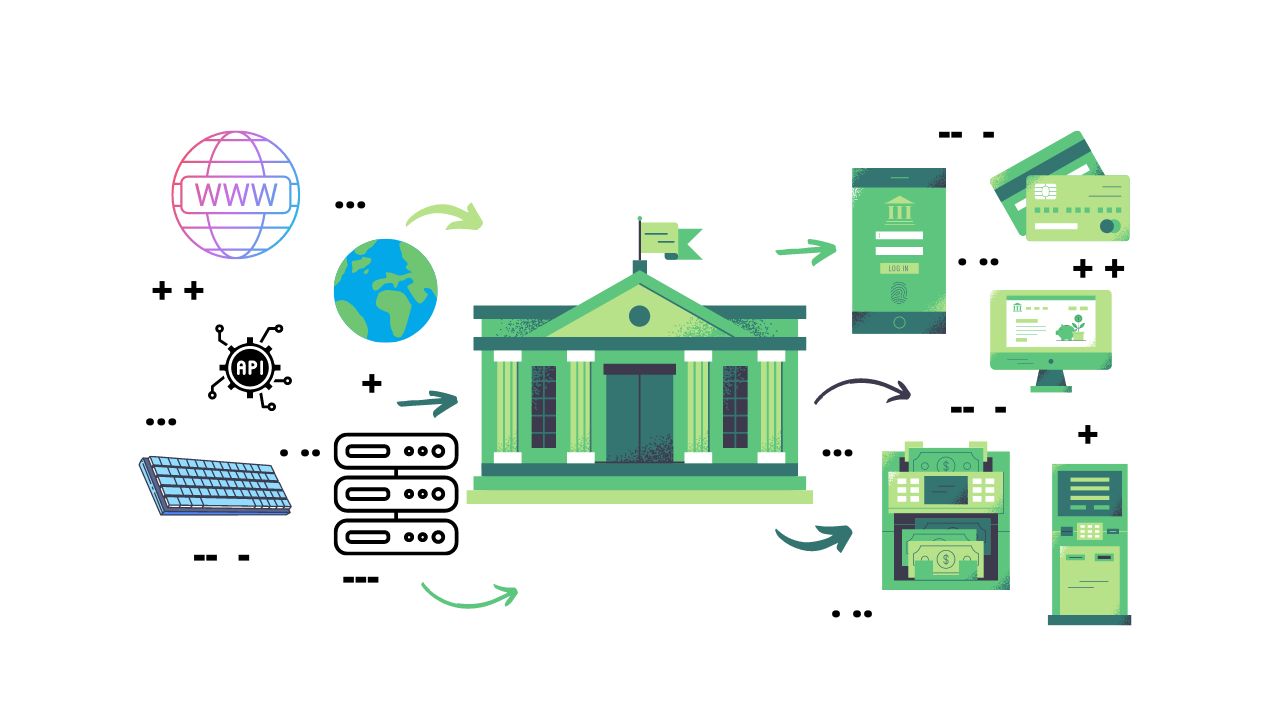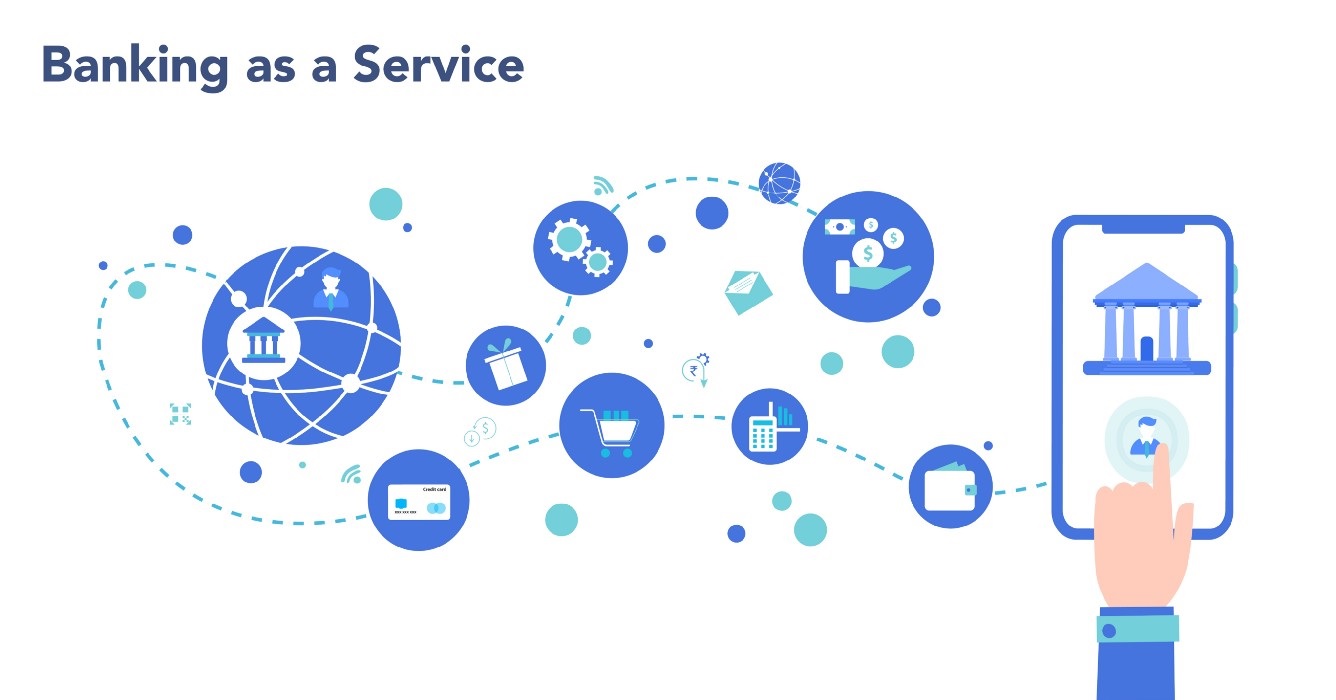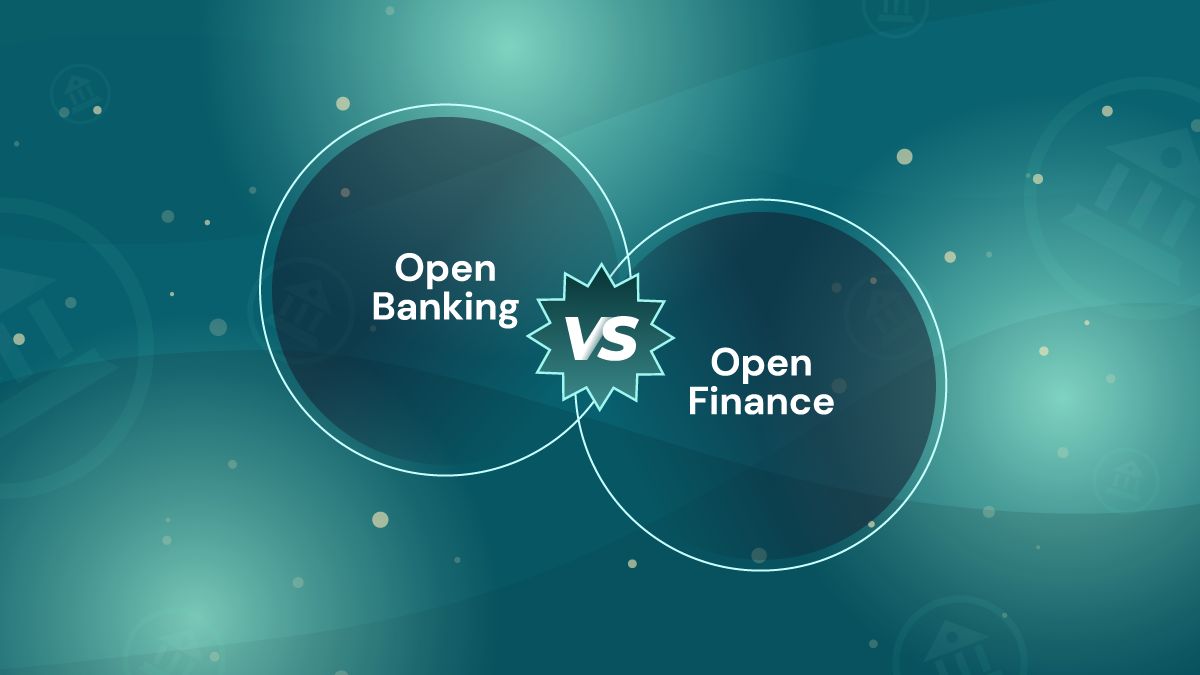Introduction
In today’s digital age, the financial landscape is rapidly evolving, ushering in a new era of banking known as Open Banking. This innovative approach to financial services is revolutionizing the way people manage their money, providing greater control, security, and convenience. Open Banking allows individuals and businesses to share their financial data securely with authorized third-party providers, enabling these providers to access bank account information and initiate transactions on behalf of the user.
At its core, Open Banking aims to enhance competition, foster innovation, and ultimately empower customers to make more informed financial decisions. It breaks down the traditional barriers between banks and other financial institutions, creating a dynamic ecosystem where customers can easily access a wide range of financial products and services. With Open Banking, users can securely share their financial data across multiple platforms, granting them the flexibility and freedom to manage their finances in a personalized and efficient manner.
The implementation of Open Banking has been facilitated by several technological advancements, most notably the Application Programming Interfaces (APIs). APIs act as the bridges between different systems, allowing data to be securely and seamlessly exchanged between banks and authorized third-party providers. This standardized data sharing framework ensures that user information is protected and that all transactions adhere to strict security and privacy guidelines.
Open Banking has gained significant traction in recent years, with numerous countries around the world embracing this transformative concept. The United Kingdom, for example, was amongst the early adopters, introducing Open Banking regulations to encourage competition and innovation in the financial sector. Other countries, such as Australia, Canada, and Singapore, have also implemented Open Banking initiatives, recognizing the immense potential for customer empowerment and economic growth.
In this article, we will explore the concept of Open Banking in more detail, highlighting its benefits and discussing some real-world examples of platforms that have successfully implemented this approach. By understanding the power of Open Banking and examining its practical applications, we can appreciate its significance in shaping the future of financial services and the positive impact it has on customers worldwide.
What is Open Banking?
Open Banking is a concept that aims to transform the traditional banking model by granting customers greater control over their financial data and enabling them to securely share it with authorized third-party providers. It allows users to share their banking information, such as transaction history, account balances, and payment data, with other financial institutions and service providers through secure Application Programming Interfaces (APIs).
One of the key principles of Open Banking is customer consent. Users have the power to decide which financial information they want to share and with whom. This puts individuals in the driver’s seat, allowing them to leverage their data to access innovative products and services tailored to their specific needs.
Open Banking introduces a more collaborative and competitive environment in the financial industry. By breaking down the traditional walls between banks and other financial institutions, it promotes innovation and fosters the development of new and improved services. Third-party providers can use Open Banking APIs to create applications that offer advanced financial management tools, personalized recommendations, seamless payment experiences, and more.
Furthermore, Open Banking promotes transparency and security. Banks and authorized third-party providers must adhere to strict data protection regulations, ensuring that customer data is handled and stored securely. With enhanced security measures in place, customers can trust that their financial information will be safeguarded and used only for authorized purposes.
In addition to empowering individuals, Open Banking also offers significant advantages to businesses. By securely sharing financial data with authorized third-party providers, businesses can streamline their payment processes, access real-time transaction information, and gain valuable insights into their financial health. This enables them to make smarter decisions, improve cash flow management, and optimize their overall operations.
Open Banking is a global movement that is transforming the way people interact with their finances. By putting users in control of their financial data, fostering competition and innovation, and prioritizing security and transparency, Open Banking offers a multitude of benefits to individuals and businesses alike. Its impact is far-reaching, driving the evolution of financial services and shaping a more open, inclusive, and customer-centric banking landscape.
Benefits of Open Banking
Open Banking offers a myriad of benefits that revolutionize the financial landscape and provide significant advantages for individuals, businesses, and the overall economy. Let’s explore some of the key benefits of Open Banking:
- Enhanced Financial Control: Open Banking puts individuals in control of their financial data, allowing them to share it with authorized third-party providers. This gives users the power to access a wide range of innovative financial products and services, enabling them to make more informed decisions and manage their money more effectively.
- Greater Access to Services: By leveraging Open Banking APIs, businesses and financial institutions can develop new and improved services tailored to customer needs. This increases competition and expands the range of financial products available, providing customers with more options and driving innovation in the industry.
- Personalized Recommendations: Open Banking enables third-party providers to access a customer’s financial data and gain insights into their spending habits, income, and financial goals. This allows for the creation of personalized recommendations and targeted offers that align with the individual’s unique financial needs.
- Seamless Financial Management: Through Open Banking, customers can consolidate their financial information from multiple accounts and institutions into a single platform. This streamlines financial management by providing a comprehensive view of their finances, making it easier to track spending, set budgets, and plan for the future.
- Efficient Payments: Open Banking simplifies the payment process by allowing users to initiate transactions directly from their chosen platform. This eliminates the need to navigate between different apps or websites, providing a seamless and convenient payment experience.
- Improved Security: Open Banking emphasizes stringent security measures to protect customer data. Banks and authorized third-party providers must comply with robust data protection regulations, ensuring that personal and financial information is handled securely and used only for authorized purposes.
- Stimulated Innovation: Open Banking fosters a more collaborative environment, encouraging the development of new and innovative financial products and services. This drives competition among service providers, leading to improved offerings, increased efficiency, and better customer experiences.
Overall, Open Banking empowers individuals to take control of their finances while promoting innovation, competition, and security in the financial industry. It opens up new opportunities for individuals and businesses, streamlines financial management, and ultimately creates a more inclusive and customer-centric banking ecosystem.
Open Banking Examples
Open Banking has gained significant traction worldwide, with numerous platforms implementing this innovative approach to financial services. Let’s explore some real-world examples of companies that have successfully embraced Open Banking:
- Revolut: Revolut is a digital banking platform that utilizes Open Banking to offer a wide range of financial services, including multi-currency accounts, budgeting tools, and investment options. Through Open Banking integrations, Revolut allows users to access and manage their accounts from various banks, providing a holistic view of their finances.
- Monzo: Monzo, a UK-based fintech firm, leverages Open Banking APIs to offer personalized banking experiences. With Open Banking integrations, Monzo users can connect their accounts from different banks, making it easier to manage multiple accounts and track their spending patterns in one place.
- Yolt: Yolt is an award-winning money management app that enables users to view and manage their various bank accounts and credit cards in one place. By utilizing Open Banking APIs, Yolt provides users with a comprehensive overview of their finances and offers personalized insights and recommendations.
- TransferWise: TransferWise, a leading international money transfer service, utilizes Open Banking to streamline the transfer process. Through Open Banking integrations, users can securely connect their bank accounts with TransferWise, enabling seamless international transfers without the need to input banking details manually.
- Xero: Xero, a cloud-based accounting software, utilizes Open Banking to provide businesses with real-time financial data. By integrating with various banking platforms, Xero enables businesses to reconcile transactions, track cash flow, and generate insights into their financial performance easily.
- Intuit QuickBooks: QuickBooks, a popular small business accounting software, leverages Open Banking to connect with banks and financial institutions. By utilizing Open Banking APIs, QuickBooks streamlines financial management for small businesses, simplifying tasks such as invoicing, expense tracking, and bank reconciliation.
- N26: N26 is a mobile banking platform that utilizes Open Banking to offer a range of banking services, including account management, budgeting tools, and instant money transfers. With Open Banking integrations, N26 provides users with a seamless and personalized banking experience.
- Stash: Stash is an investment app that leverages Open Banking APIs to provide users with personalized investment recommendations. By securely connecting to users’ bank accounts, Stash analyzes spending patterns and offers tailored investment options.
- Digit: Digit is a savings app that uses Open Banking to analyze users’ spending habits and automatically save money on their behalf. By securely connecting to their bank accounts, Digit identifies opportunities to save and transfers small amounts into a savings account.
- Plum: Plum is an AI-powered savings app that utilizes Open Banking APIs to identify opportunities for users to save money. By analyzing spending patterns and income, Plum automatically sets aside small amounts into a savings account, helping users achieve their financial goals.
These are just a few examples of companies that have successfully implemented Open Banking practices. By embracing the potential of Open Banking, these platforms offer innovative and personalized financial services that empower individuals and businesses to take control of their finances and achieve their financial goals.
Example 1: Revolut
Revolut is a digital banking platform that has leveraged Open Banking to provide users with a wide range of financial services. As a pioneer of the Open Banking movement, Revolut has revolutionized the way people manage their money by offering innovative features that allow for seamless financial control and flexibility.
One of the key features of Revolut is its ability to integrate with multiple banks through Open Banking APIs. This enables users to connect their accounts from various banks, providing a consolidated view of their finances in one place. With this integration, users can easily monitor their account balances, view transaction history, and categorize their expenses, all within the Revolut app.
Furthermore, Revolut utilizes Open Banking to offer budgeting tools and insights to its users. By analyzing spending patterns and categorizing transactions, Revolut provides personalized budgeting suggestions and alerts to help users manage their expenses effectively. This feature empowers individuals to take control of their finances and make informed decisions about their spending habits.
In addition to traditional banking services, Revolut utilizes Open Banking to offer a range of innovative features. For example, Revolut enables users to make instant money transfers to friends and family, regardless of their banking provider. By leveraging Open Banking APIs, Revolut ensures a seamless and secure transfer process, eliminating the need for manual input of banking details.
Revolut has also integrated Open Banking to provide users with access to various financial products. Through partnerships with other financial service providers, Revolut offers services such as insurance, investments, and even cryptocurrency trading. By utilizing Open Banking, Revolut has created an ecosystem that allows users to effortlessly access and manage a wide range of financial products and services within a single platform.
As Open Banking continues to evolve, Revolut remains at the forefront of innovation, constantly expanding its offerings and improving its user experience. By harnessing the power of Open Banking, Revolut has transformed the traditional banking model, providing users with greater control, convenience, and access to financial services that meet their specific needs.
Example 2: Monzo
Monzo is a UK-based fintech firm that has embraced Open Banking, revolutionizing the way individuals manage their finances. As a digital banking platform, Monzo utilizes Open Banking to offer personalized and innovative banking experiences to its users.
One of the key features of Monzo is its ability to connect with multiple bank accounts through Open Banking APIs. This allows users to consolidate their accounts from various banks into the Monzo app, providing a convenient and centralized view of their finances. By integrating accounts, users can easily track their spending, view real-time balances, and receive instant transaction notifications across all their accounts.
Monzo leverages Open Banking to offer advanced budgeting tools and insights. By analyzing transaction data from linked accounts, Monzo provides users with personalized spending breakdowns, showing them how much they’re spending on different categories such as groceries, eating out, or subscriptions. This feature empowers individuals to gain a better understanding of their spending habits and make informed decisions about their finances.
In addition to traditional banking services, Monzo uses Open Banking to provide users with added benefits and features. For example, Monzo’s “Connected Cards” feature allows users to link their credit cards to their Monzo account, enabling them to track their credit card spending alongside their debit card transactions. This integration provides a holistic view of all spending, giving users a comprehensive understanding of their overall financial health.
Furthermore, Monzo has integrated Open Banking to make it easier for users to make payments and transfers. By utilizing Open Banking APIs, Monzo allows users to initiate payments directly from the app, streamlining the payment process and eliminating the need to log into separate banking platforms or input lengthy bank details. This provides a seamless and convenient payment experience for Monzo users.
As an early adopter of Open Banking, Monzo has played a significant role in shaping the future of financial services. By leveraging the power of Open Banking, Monzo has transformed the traditional banking model, offering users greater control, flexibility, and convenience in managing their finances. With its user-friendly interface, advanced budgeting tools, and integrated payment features, Monzo continues to lead the way in providing innovative and personalized banking experiences to its growing customer base.
Example 3: Yolt
Yolt is an award-winning money management app that has embraced Open Banking to provide users with a comprehensive view of their financials. By utilizing Open Banking APIs, Yolt offers a range of features that empower users to take control of their finances and make more informed decisions.
One of Yolt’s key features is its ability to connect with multiple bank accounts through Open Banking. By integrating accounts from different banks, users can have a unified view of their finances within the Yolt app. This allows them to easily monitor their account balances, track transactions, and categorize expenses across all their accounts, providing a consolidated overview of their financial health.
Yolt leverages Open Banking to offer personalized insights and recommendations based on user spending patterns. By analyzing transaction data from linked accounts, Yolt provides users with valuable insights into their spending habits, such as identifying areas where they can potentially save money or highlighting recurring expenses. These insights enable users to make more informed decisions about their finances and improve their financial well-being.
In addition to tracking and analyzing financial data, Yolt utilizes Open Banking to provide users with tailored recommendations for financial products and services. By securely accessing user transaction data, Yolt can suggest suitable offers and deals from various financial providers, helping users save money and find the best financial products to suit their needs.
Yolt also emphasizes the importance of budgeting and provides users with powerful budgeting tools. By leveraging Open Banking APIs, Yolt helps users set budget goals, track their progress, and receive notifications and alerts if they exceed their planned spending in certain categories. This helps users stay on top of their finances and ensures that they stay within their budgetary limits.
Furthermore, Yolt seamlessly integrates with other financial apps and services through Open Banking. This allows users to access additional features and services, such as making payments or initiating transfers from within the Yolt app, reducing the need to switch between multiple platforms and making financial management more efficient and convenient.
By embracing the power of Open Banking, Yolt has created a user-friendly platform that provides individuals with a holistic view of their finances and offers personalized insights and recommendations. As Open Banking continues to evolve, Yolt remains at the forefront, leveraging this technology to empower individuals to take control of their finances and achieve their financial goals.
Example 4: TransferWise
TransferWise, a leading international money transfer service, has embraced Open Banking to provide users with seamless and efficient transfer experiences. By utilizing Open Banking APIs, TransferWise has revolutionized the way individuals and businesses send and receive money across borders.
One of TransferWise’s key features made possible by Open Banking is the ability to connect with users’ bank accounts directly. This allows users to securely link their accounts with TransferWise, eliminating the need for manual input of banking details for each transaction. By leveraging Open Banking integrations, TransferWise has made the transfer process faster, easier, and more convenient.
TransferWise also uses Open Banking to provide users with real-time exchange rates and transparent fees. By securely accessing user bank account information, TransferWise can offer users accurate and up-to-date exchange rates, ensuring that they are getting the best possible rates for their international transfers. Additionally, Open Banking enables TransferWise to display all fees upfront, ensuring transparency and eliminating any surprises during the transfer process.
Furthermore, TransferWise leverages Open Banking to streamline the authentication process for users. By integrating with users’ banks through Open Banking APIs, TransferWise can offer secure and reliable authentication, eliminating the need for users to create new credentials or remember additional login information. This simplifies the user experience and enhances the security of each transaction.
By utilizing Open Banking, TransferWise has also been able to expand its offerings beyond traditional money transfers. With Open Banking integrations, TransferWise now offers multi-currency accounts that allow users to hold and manage balances in different currencies. This feature enables users to receive, hold, and exchange funds in various currencies, providing them with greater flexibility and reducing the need for separate bank accounts for different currencies.
In summary, TransferWise has leveraged Open Banking to transform the international money transfer landscape. By utilizing Open Banking APIs, TransferWise has streamlined the transfer process, facilitated real-time exchange rates, enhanced security, and expanded its product offerings. As Open Banking continues to evolve, TransferWise remains at the forefront, leveraging this technology to provide users with cost-effective, convenient, and transparent international money transfer solutions.
Example 5: Xero
Xero, a cloud-based accounting software, has embraced Open Banking to provide businesses with real-time financial information and streamline their accounting processes. By integrating with various banking platforms through Open Banking, Xero offers a range of features that help businesses manage their finances more efficiently and make informed decisions.
One of the key features of Xero enabled by Open Banking is the ability to automatically import bank transactions. By utilizing Open Banking APIs, Xero securely connects with users’ bank accounts, allowing for real-time and automatic import of transaction data. This eliminates the need for manual entry, saves time, and ensures accurate and up-to-date financial information within the Xero platform.
Moreover, Xero utilizes Open Banking to enable bank reconciliation, a process that matches transactions recorded in Xero with those in the linked bank account. By leveraging Open Banking integrations, Xero compares imported bank transactions with the transactions recorded in the accounting system, making it easier to identify discrepancies and reconcile accounts more efficiently. This feature provides businesses with an accurate and reliable overview of their financial position.
In addition to transaction import and bank reconciliation, Xero utilizes Open Banking to provide businesses with real-time information on cash flow. By connecting with bank accounts through Open Banking APIs, Xero offers a comprehensive and up-to-date view of a business’s cash position, allowing users to monitor their inflows and outflows, forecast future cash flow, and make informed financial decisions accordingly.
Furthermore, Xero’s integration with Open Banking allows for seamless payment capabilities. Businesses can initiate payments directly from the Xero platform, leveraging Open Banking to securely transmit the necessary payment information to the respective bank. This feature simplifies the payment process, reduces manual effort, and provides businesses with a centralized platform for managing their financial transactions.
By utilizing Open Banking, Xero has transformed the accounting landscape by offering businesses a streamlined and efficient way to manage their finances. Through real-time transaction import, bank reconciliation, cash flow management, and seamless payment capabilities, Xero empowers businesses to stay on top of their financials and make informed decisions for long-term success.
Example 6: Intuit QuickBooks
Intuit QuickBooks, a popular small business accounting software, has embraced Open Banking to enhance its platform and deliver a comprehensive financial management solution for small businesses. By integrating with various banks and financial institutions through Open Banking APIs, QuickBooks offers a range of features that streamline financial management, improve efficiency, and provide valuable insights for small business owners.
One of the key features of QuickBooks enabled by Open Banking is the ability to securely import banking transactions. Through Open Banking integrations, QuickBooks can connect with users’ bank accounts and automatically import transaction data in real-time. This eliminates the need for manual data entry, saves time, and ensures accuracy in recording financial transactions within the QuickBooks platform.
By leveraging Open Banking, QuickBooks allows for seamless bank reconciliation. It matches the imported banking transactions with the transactions recorded in the accounting system, making the reconciling process simpler and more effective. This ensures that small business owners have an accurate and up-to-date view of their financial position, enabling them to make informed financial decisions.
Moreover, QuickBooks utilizes Open Banking to empower small business owners with real-time cash flow information. By integrating with bank accounts through Open Banking APIs, QuickBooks provides users with a comprehensive view of their cash flow, enabling them to monitor and manage their inflows and outflows more effectively. This allows business owners to make data-driven decisions to optimize their cash flow management.
Another significant feature of QuickBooks enabled by Open Banking is the ability to initiate payments and transfers directly from the software. By leveraging Open Banking integrations, QuickBooks provides small business owners with a convenient and secure way to pay bills, make vendor payments, and transfer funds, eliminating the need to switch between multiple platforms or perform manual bank transfers.
Furthermore, QuickBooks leverages Open Banking to enhance its reporting and analytics capabilities. By securely accessing banking data, QuickBooks can generate insightful reports and provide valuable financial analysis to help small business owners understand their financial performance and make informed decisions for growth and profitability.
In summary, QuickBooks has seamlessly integrated Open Banking to empower small business owners with efficient financial management tools. By leveraging Open Banking APIs, QuickBooks automates transaction import, simplifies bank reconciliation, offers real-time cash flow insights, enables seamless payments, and provides robust reporting and analytics. These features enhance accuracy, save time, and provide valuable insights for small business owners, allowing them to focus on growing their business with confidence.
Example 7: N26
N26 is a mobile banking platform that has embraced Open Banking to provide users with a streamlined and user-friendly banking experience. By leveraging Open Banking APIs, N26 offers a range of features that enhance financial control, convenience, and overall banking satisfaction.
One of the key features of N26 enabled by Open Banking is the ability to connect with multiple bank accounts. By integrating with various banks through Open Banking, N26 allows users to view and manage all their accounts within a single platform. This provides users with a consolidated view of their finances, making it easier to track account balances, monitor transactions, and manage their financial health effectively.
N26 also utilizes Open Banking to offer real-time transaction alerts and notifications. By securely accessing transaction data through Open Banking APIs, N26 instantly notifies users whenever a transaction is made on their accounts. This feature provides users with instant visibility and control over their spending, helping them stay on top of their financial activities and identify any unauthorized or suspicious transactions.
In addition to seamless account management, N26 leverages Open Banking to simplify money transfers. By connecting with other banks through Open Banking APIs, N26 enables users to initiate transfers directly from the app. This eliminates the need to switch between different banking platforms, streamlining the transfer process and providing a seamless and convenient experience for users.
N26 also offers budgeting tools that are enhanced by Open Banking integrations. By securely analyzing transaction data through Open Banking APIs, N26 provides users with personalized insights into their spending habits and offers budgeting recommendations. Users can easily categorize their expenses and set financial goals, helping them stay on track and achieve their desired financial outcomes.
Furthermore, N26 has integrated Open Banking to provide users with added security. By utilizing Open Banking APIs, N26 utilizes secure authentication processes and encryption to protect user data. These security measures ensure that user information is safely handled and that all transactions and interactions within the N26 platform adhere to strict security standards.
By embracing Open Banking, N26 has transformed the mobile banking experience by providing users with enhanced financial management capabilities, seamless money transfers, personalized insights, and robust security measures. As Open Banking continues to evolve, N26 remains at the forefront, leveraging this technology to deliver a customer-centric and innovative mobile banking solution.
Example 8: Stash
Stash is an investment app that has leveraged Open Banking to provide users with a simplified and intuitive investment experience. By integrating with various banks through Open Banking APIs, Stash offers features that empower users to start investing and grow their wealth.
One of the key features of Stash enabled by Open Banking is the ability to link bank accounts seamlessly. By securely connecting with users’ bank accounts through Open Banking APIs, Stash enables users to transfer funds from their bank account to their investment portfolio with ease. This eliminates the need for manual input of banking details, streamlining the funding process and allowing users to start investing quickly.
In addition to easy account funding, Stash utilizes Open Banking to provide users with personalized investment recommendations. By analyzing financial data from linked bank accounts, Stash can offer tailored investment options based on the user’s risk tolerance and financial goals. This feature helps users make informed investment decisions and build a diversified portfolio that aligns with their unique needs.
Furthermore, Stash leverages Open Banking to simplify the process of periodic investments. Users can set up recurring transfers from their bank account to their investment portfolio. By utilizing Open Banking APIs, Stash automates the transfer process, ensuring that users’ investments are made on a regular basis without manual intervention. This feature makes it convenient for users to contribute to their investments consistently.
Stash also offers automated investment features that are made possible by Open Banking integrations. By securely analyzing transaction data through Open Banking APIs, Stash can round up users’ daily purchases and automatically invest the spare change. This allows users to grow their investment portfolio gradually without feeling the impact on their day-to-day spending.
Moreover, Stash uses Open Banking to simplify the withdrawal process. When users want to withdraw funds from their investment portfolio, Stash can securely transfer the funds back to their linked bank account through Open Banking APIs. This provides a seamless and efficient withdrawal experience for users, ensuring that their funds are returned promptly and securely.
By embracing Open Banking, Stash has transformed the investment landscape by providing users with a user-friendly and accessible investment platform. Through seamless account funding, personalized investment recommendations, recurring investments, automated features, and simplified withdrawals, Stash enables users to grow their wealth and achieve their financial goals with ease.
Example 9: Digit
Digit is a savings app that has embraced Open Banking to help users save money effortlessly. By utilizing Open Banking APIs, Digit analyzes users’ spending habits and income to identify opportunities for savings and facilitate automatic savings transfers.
One of the key features of Digit enabled by Open Banking is the ability to securely connect with users’ bank accounts. By integrating with various banks through Open Banking, Digit can securely access transaction data, allowing for a comprehensive understanding of users’ spending patterns and income.
With the help of Open Banking, Digit analyzes users’ transaction data to identify opportunities to save. Digit looks for patterns and analyzes users’ cash flow to determine when it’s safe to transfer funds into a savings account. By automating the savings process based on users’ personalized financial situations, Digit takes the guesswork out of saving and makes it effortless.
Open Banking also allows Digit to facilitate automatic savings transfers. Through secure connections with users’ bank accounts, Digit can initiate transfers from the user’s checking account into their Digit savings account. The amount transferred is determined by Digit’s algorithms, which consider the user’s spending patterns and account balances to determine how much can be comfortably saved.
By leveraging Open Banking APIs, Digit ensures that the savings transfers are executed securely and efficiently. The use of Open Banking enables Digit to securely link with users’ bank accounts and establish a seamless transfer process. This eliminates the need for manual intervention, making it easy for users to consistently save money without the hassle of manually transferring funds.
Another benefit of Digit’s use of Open Banking is the ability to provide users with real-time insights into their savings progress. By analyzing transaction data, Digit can display personalized saving insights within the app. Users can see how much they have saved over time and track their progress towards their financial goals. This transparency and visibility into their savings journey helps users stay motivated and engaged in reaching their goals.
By utilizing Open Banking, Digit has transformed the savings experience for users, making it effortless and personalized. With the ability to securely connect with users’ bank accounts and analyze transaction data, Digit identifies savings opportunities and facilitates automatic transfers. This automated approach to saving empowers users to grow their savings effortlessly and make progress towards their financial goals without the need for manual intervention.
Example 10: Plum
Plum is an AI-powered savings app that utilizes Open Banking to help users save money and achieve their financial goals. By leveraging Open Banking APIs, Plum analyzes users’ spending habits and offers personalized savings recommendations and automated savings transfers.
One of the key features of Plum enabled by Open Banking is the ability to securely connect with users’ bank accounts. By integrating with various banks through Open Banking, Plum can access users’ transaction data, enabling a comprehensive understanding of their spending patterns, income, and financial behavior.
Using the insights gained from Open Banking, Plum offers personalized savings recommendations. Through its AI-powered algorithms, Plum analyzes users’ transaction data to identify areas where they can save money. Whether it’s suggesting cutting back on subscription services or reducing unnecessary expenses, Plum helps users identify opportunities for saving more effectively.
Additionally, with the help of Open Banking, Plum facilitates automated savings transfers. Plum sets aside small amounts of money based on its analysis of users’ spending patterns and financial situation. These savings transfers are seamlessly initiated through Open Banking APIs, ensuring that users’ savings goals are met without requiring manual effort on their part.
By leveraging Open Banking, Plum ensures that the savings transfers are executed securely and efficiently. The use of Open Banking allows Plum to connect with users’ bank accounts, securely access their funds, and carry out the necessary savings transfers. This provides users with peace of mind, knowing that their savings are being managed securely and automatically.
Furthermore, Plum provides users with real-time insights into their savings progress. Through the app, users can track their savings over time, view their progress, and receive notifications and updates on their savings achievements. This transparency and visibility into their savings journey motivates users to stay on track and reach their financial goals.
Through the combination of AI-powered recommendations, automated savings transfers, and real-time insights, Plum makes saving money effortless and personalized. By utilizing Open Banking, Plum offers a seamless and secure savings experience, helping users save money consistently and achieve their financial objectives.
Conclusion
Open Banking has ushered in a new era of financial services, transforming the way individuals and businesses manage their finances. By leveraging Open Banking APIs, innovative platforms and applications have emerged, offering a wide range of benefits and empowering users to take control of their financial lives.
Through Open Banking, individuals can access a range of personalized financial products and services. Platforms such as Revolut, Monzo, and Yolt allow users to connect their bank accounts, track their spending, receive personalized recommendations, and manage their finances seamlessly. These platforms have revolutionized the banking experience, providing users with greater transparency, control, and convenience in their financial transactions.
Businesses also benefit from Open Banking by gaining access to real-time financial information, streamlined payments, and improved cash flow management. Accounting software such as Xero and Intuit QuickBooks utilize Open Banking to automate transaction imports, simplify bank reconciliation, and provide valuable financial insights, enabling businesses to make data-driven decisions for growth and success.
Additionally, Open Banking has opened doors for financial innovation and collaboration. Investment apps like Stash and Digit leverage Open Banking to provide personalized savings and investment options, automatically transfer funds, and help users achieve their financial goals effortlessly. These platforms have made investing and saving more accessible and convenient, democratizing wealth-building opportunities.
The implementation of Open Banking has enhanced security and privacy measures, with strict data protection regulations in place. Users can trust that their financial information is handled securely and that transactions adhere to industry standards.
In conclusion, Open Banking has revolutionized the financial landscape, empowering individuals and businesses with greater control, convenience, and personalized financial experiences. The examples highlighted in this article demonstrate the diverse applications and benefits of Open Banking, and how it is reshaping the way we manage our finances. As technology continues to evolve and Open Banking becomes more prevalent, we can expect even more innovative and user-centric financial solutions to emerge, ushering us into a new era of financial empowerment and convenience.

























